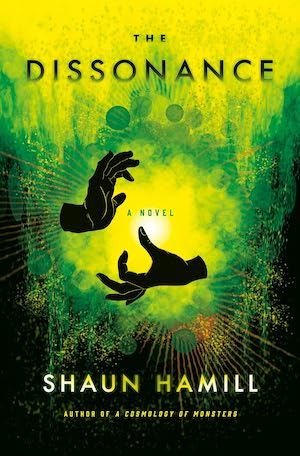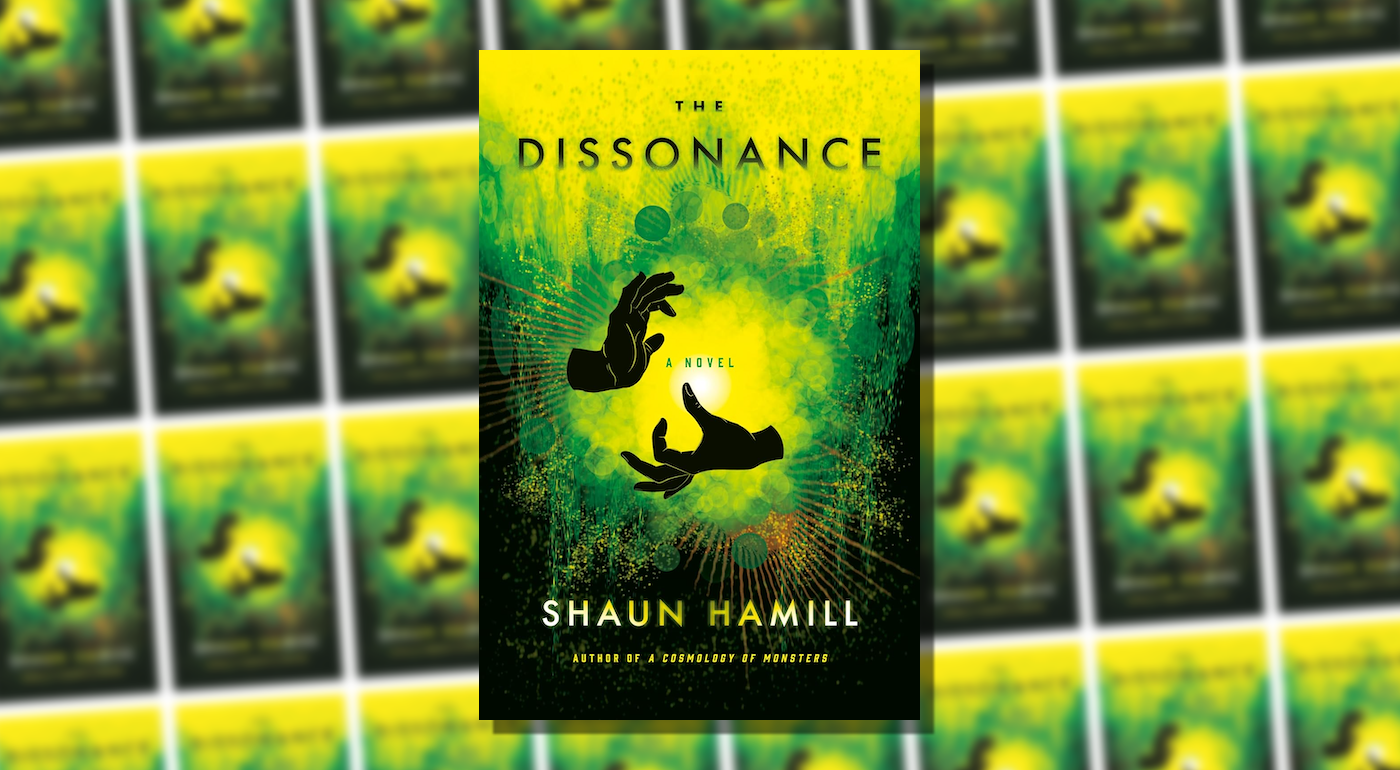While browsing the horror shelves at Bridgton Books on a trip to Maine three years ago, something caught my eye. The book that caught my eye had a great title: A Cosmology of Monsters. It didn’t hurt that the front cover featured a blurb by Stephen King comparing the book inside to a theoretical horror novel by John Irving. That sounded like an interesting prospect, so I picked up the book – the debut of its author, Shaun Hamill – and quickly devoured it.
First of all, yes, King’s pitch was spot on; it did indeed have some of the nuanced characterization and evocativeness I’d normally associate with Irving. It was also a proper horror novel, one with bizarre creatures, a sense of cosmic dread, and deals that didn’t end well. And that’s what struck me most: while the novel adhered to some traditional tenets of storytelling, the nature of horror and the way it was intertwined with desire in some ways felt deeply idiosyncratic. As I read it, I got the sense that Hamill was drawing on very specific things that unsettled him; that in turn helped the book feel fresh throughout, and ultimately led it to a distinctive ending that has stuck with me over the years.
What I am saying is that I was both excited and a little nervous when I read what Hamill did next. The dissonancethat checks off several “yes, this is a second novel” boxes: a larger cast of characters, a sophisticated structure, and a whole lot of worldbuilding. It is also, thankfully, not A Cosmology of Monsters II-instead, The dissonance feels like a very different, if still idiosyncratic, foray into the hinterlands where fantasy and horror mix. There might be a bit of dark science in there too. I’m honestly not sure, mostly because I’m not sure how best to define dark science other than along the lines of “I’m pretty sure the author of this book liked The secret history.” But if you dig The Magicians or Ninth Housewith maybe a little The Umbrella Academy I suspect you’ll find a lot you like in this mix.
It doesn’t hurt that The dissonance has an absolute cracker of a first sentence:
Twenty-one years after his mother was murdered and a year after killing a man in a bar fight, Hal Isaac stands on the steps of St. Matthew’s Catholic Church in Vandergriff, Texas, smoking a cigarette.
Hamill quickly fills in more details. Hal is at church for an AA meeting; his legal fate is still uncertain. He also has the ability to light a cigarette by supernatural means and mentions in passing that he was able to do “far more impressive things” when he was younger. And he’s just been invited to a memorial service for something that happened at his high school 20 years ago.
Buy book


The dissonance
Shortly after, Hamill introduces the other characters this novel revolves around. They include two of Hal’s former classmates, Erin and Athena, and a teenager named Owen, whose connection to them is unclear at the beginning of the book. When we first meet Owen, he and some friends are attempting an occult ritual; something goes very wrong, Owen’s friends are killed, and some kind of entity takes over the body of Cole, the object of Owen’s crush.
Hamill uses a parallel structure to tell this story, showing us Hal, Erin and Athena in the present and also in their youth, when they studied a type of magic known as dissonance. They did this with their friend Peter, whose grandfather, Mr. Marsh, ran their classes. From the absence of Peter and his grandfather in the present sequences, it’s clear that something unpleasant is about to happen to them. Meanwhile – also in the present – the entity in Cole’s body guides Owen through a series of tasks; if you suspect that their path will eventually cross that of Athena, Erin and Hal, you’re not wrong.
The heart of The dissonance is the process by which the quartet of young friends are instructed in the art of dissonance. What is most interesting about it is the way Hamill depicts an essentially magical underworld; this is not a book in which a school for magic exists hidden from the rest of the world, nor does it exist in full view of the world. Instead, dissonance – and its practitioners, the dissonants – occupy a space somewhere between academic subcultures and elite chess. There is a scene in which Marsh takes his students to a conference, where they, and we, learn that he is something of an outsider in the community. The conference they attend is also full of lectures about what exactly dissonance is – and whether its power might be theological in origin.
The world-building is fascinating, from the irony of the academic distance used to analyze wild magic to the flying contests that Dissonants compete in. This doesn’t seem to be the first volume of a stealth trilogy; still, Hamill has clearly put a lot of work into creating both an interesting system of magic and an equally interesting way in which knowledge of it is disseminated, and the insight into the larger world of Dissonants that Athena and her companions get turns many of the genre’s tropes on their head.
(Spoilers follow.)
It’s the character of Marsh that gives Hamill both interesting space, but unfortunately uses a narrative style that feels all too familiar. The idea that the wise mentor might be less of a visionary and more of a crank is appealing, and Marsh’s students gradually realizing that their teacher might have become alienated from the larger magical community for a reason fits well with the growing sense of doom in this storyline.
On the other hand, Hamill also does a lot to paint these students as outsiders, and when they venture into the conference, that motif is particularly strong. Since Marsh—again, spoiler—turns out to be more of an antagonist than a mentor, that feeling is further complicated. (It’s also one of several recent fantasy novels I’ve read in which the irascible mentor turns out to be the villain; it’s an understandable subversion of genre tropes, but it also starts to feel like a cliche itself.) I don’t think Hamill is suggesting that the wider Dissonance community was right to eye Hal, Athena, Erin, and Peter with suspicion—but it’s a challenging set of emotional moments to portray.
There are a few other moments where I wish the book was a bit longer. In an early scene, Athena meets Garrett, whom she met years earlier at that fateful meeting of the Dissonants. This scene, and its hint of various magical subcultures, hints at a larger world that Hamill doesn’t really explore. And while “always leave them wanting more” is sound advice for a reason, the world-building here is so compelling that I still found myself wanting more insight into that world.
If I appear too critical of these aspects, The dissonanceI don’t want to give the impression that I didn’t enjoy the book. It was a compelling read, the storylines separated by time and geography converge in memorable ways, and the characters react realistically to a universe that becomes increasingly surreal as the story progresses. Hamill set the bar very high with his first novel, and it’s refreshing to see him take it in a new direction with this one. While some elements of the book are frustrating at times, its strengths are numerous enough to keep the reader engaged – and hopefully enjoyed even more when it’s all over.
The dissonance is published by Pantheon.

